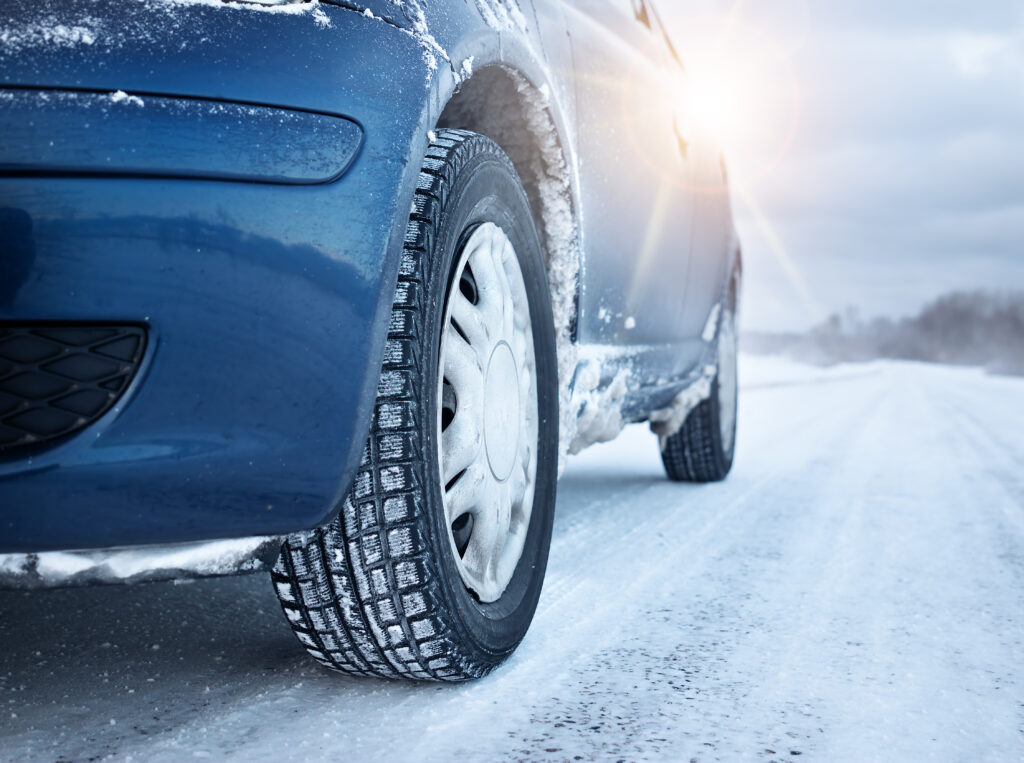Keeping an eye on your tires is crucial for safe driving, but how do you know when they’re past their prime? Tires wear out gradually, and spotting the signs early can save you from a roadside mishap or costly repairs. In this blog, we’ll explore the top five signs that indicate it’s time to replace your tires. Whether you’re a seasoned driver or just starting out, these tips will help you stay safe and keep your vehicle running smoothly.
Signs to Replace Your Tires

1. Tread Depth is Too Low
Tread depth plays a crucial role in maintaining your vehicle’s grip on the road, especially in wet or slippery conditions. Adequate tread depth helps prevent hydroplaning by channeling water away from the tire, ensuring better traction and control. To check your tread depth, you can use the simple penny test: insert a penny into the tread groove with Lincoln’s head facing down. If you can see the top of Lincoln’s head, your tread is too low, and it’s time to replace your tires.
Alternatively, a tread depth gauge provides a more accurate measurement. The legal minimum tread depth is typically 2/32 of an inch, but experts recommend replacing tires when they reach 4/32 of an inch to maintain optimal safety and performance. Keeping an eye on your tread depth is essential for safe driving and avoiding potential accidents.
2. Visible Tire Damage
Visible damage to your tires, such as cracks, bulges, punctures, or cuts, can signal the need to replace your tires. Cracks often appear on the sidewall or tread due to aging or exposure to harsh weather conditions. Bulges can form when the internal structure of the tire is compromised, usually from hitting potholes or curbs, which can cause the tire to weaken. Punctures and cuts may occur if the tire encounters sharp debris on the road.
Ignoring visible damage is risky, as it can lead to tire blowouts, increasing the chances of losing control of the vehicle. Blowouts, especially at high speeds, can be extremely dangerous and cause accidents. To ensure your safety and that of your passengers, regularly inspect your tires for visible damage and replace them as needed.
3. Uneven Tire Wear
Uneven tire wear is a clear indicator that it may be time to replace your tires. Common causes of uneven tire wear include misalignment of the wheels, improper tire inflation, or suspension issues. If your tires are wearing more on one side or have noticeable wear patterns on the center or edges, it could point to these problems.
Identifying uneven wear early can prevent further damage; look for tread that is deeper on one side or patches of balding. To prevent uneven wear and extend tire life, it’s crucial to regularly rotate your tires, ensure your wheels are properly aligned, and maintain correct tire pressure. Addressing these issues not only helps in maximizing the life of your tires but also enhances your vehicle’s safety, handling, and fuel efficiency.
4. Frequent Air Pressure Loss
Frequent air pressure loss in your tires is a warning sign that should not be ignored, and is a sign to replace your tires. While a small amount of pressure loss over time is normal due to temperature changes, consistent loss beyond this can indicate a problem. Potential causes of abnormal pressure loss include punctures from nails or other debris, valve stem issues where the air is escaping, or bead leaks where the tire meets the rim.
If you’re constantly refilling your tires, it’s crucial to determine whether a repair is possible or if a full replacement is necessary. Small punctures in the tread may be repairable, but sidewall damage or significant leaks usually require tire replacement. Ignoring frequent air loss can lead to unsafe driving conditions, decreased fuel efficiency, and potential tire failure, making it vital to address these issues promptly.
5. Age of the Tires
The age of your tires is a crucial factor in determining when you need to replace your tires. Most tires have a lifespan of about 6-10 years, depending on the manufacturer. As tires age, signs of wear such as cracking, drying, and hardening of the rubber can appear, compromising their safety and performance. To check the age of your tires, look for the DOT code on the sidewall; the last four digits indicate the week and year of manufacture. Regularly checking your tires’ age helps ensure they remain in good condition and safe for driving.
Choose Ray’s Muffler for Car Maintenance
Ray’s Muffler provides comprehensive auto repair and maintenance services, including tire checks. Our skilled technicians handle everything from routine tire inspections to complex repairs to ensure your vehicle runs smoothly and safely. Whether you need a quick tire check or extensive maintenance, Ray’s Muffler offers reliable service to keep your vehicle in top shape. Contact us today to learn more about our services and get yours scheduled.




